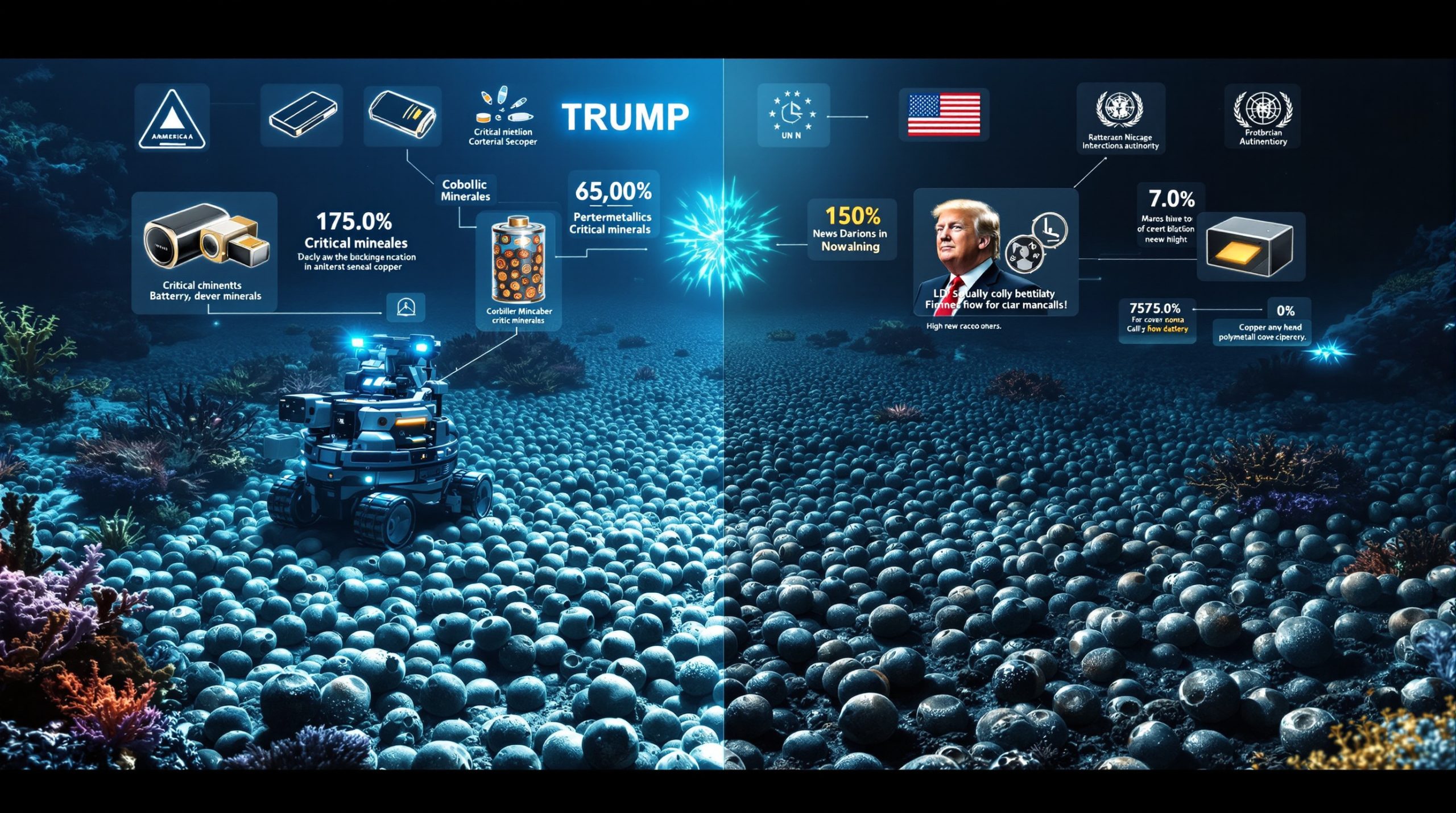Global Copper Production Shifts: The Changing Landscape (1970-2024)
The global copper landscape has undergone a remarkable transformation over the past five decades, reshaping economic fortunes and industrial capabilities worldwide. From the dominance of traditional Western producers to the emergence of new mining powerhouses, the copper industry's evolution tells a story of geological fortune, technological innovation, and geopolitical realignment.
Global copper production has expanded dramatically, with output increasing from approximately 6.5 million metric tons in 1970 to an impressive 23.0 million metric tons by 2024—a staggering 254% increase that has reshaped international trade patterns and industrial capabilities.
This seismic shift has seen Chile rise from a modest producer to the undisputed copper giant, while the Democratic Republic of Congo has emerged from relative obscurity to become the world's second-largest supplier, challenging the established order and redefining global copper market dynamics.
The Evolution of Global Copper Production
Global Copper Output Expansion
The copper production landscape has transformed dramatically since 1970, with global output more than tripling over five decades. This remarkable growth trajectory has been particularly pronounced since the late 1980s, when technological advancements and policy reforms catalyzed production across multiple regions.
From 1980 to 2000, global copper production grew at a compound annual growth rate (CAGR) of 3.2%, accelerating to 5.8% in the 2000s as emerging economies rapidly industrialized. This expansion has been uneven, with production increasingly concentrated in a smaller number of countries with world-class deposits and favorable mining conditions.
The introduction of solvent extraction-electrowinning (SX-EW) technology in the 1980s revolutionized copper processing, enabling producers to economically extract metal from oxide ores that were previously considered waste. This innovation proved particularly advantageous for Chilean operations, which possessed substantial oxide reserves amenable to this process.
Key Historical Milestones in Copper Production
The 1970s marked the twilight of American copper dominance, with the United States producing approximately 1.6 million metric tons annually and commanding 25% of global supply. This leadership position eroded as domestic ore grades declined and environmental regulations tightened, culminating in the symbolic 1977 closure of Montana's historic Anaconda mine.
The late 1980s witnessed Chile's dramatic ascent to copper supremacy, propelled by its groundbreaking 1983 Mining Law that permitted foreign ownership and investment in the sector. This legislative reform unleashed a flood of international capital into Chilean mining, with the country's output growing from 1.4 million tons in 1985 to 4.6 million tons by 2000.
The early 2000s heralded China's emergence as a copper production powerhouse, with output increasing from a modest 0.4 million tons in 2000 to 1.8 million tons by 2024. This production surge aligned with China's broader industrial expansion and its strategic focus on securing domestic material supply chains.
Recent decades have witnessed the Democratic Republic of Congo's explosive growth as a copper producer, with production skyrocketing from just 0.2 million tons in 2000 to 3.1 million tons in 2024—a remarkable 1,450% increase driven by high-grade ore bodies and substantial Chinese investment in the Copperbelt region.
Who Are Today's Copper Production Leaders?
Chile: The Undisputed Copper Giant
Chile maintains its position as the world's dominant copper producer with estimated output of 5.3 million metric tons, representing approximately 23% of global production. The country's extraordinary geological endowment, featuring extensive porphyry deposits with grades averaging 0.7% copper, provides a natural competitive advantage that has proved difficult for rivals to overcome.
Chile's copper industry contributes roughly 45% of the country's GDP, with state-owned Codelco operating legendary mines like Chuquicamata and El Teniente that collectively account for 10% of global supply. The company has maintained production despite declining ore grades through massive capital investments, including the $5.8 billion conversion of Chuquicamata from open-pit to underground operations.
"Chile's regulatory stability and transparent mining code continue to attract approximately $20 billion in annual foreign direct investment, despite challenges from water scarcity in the Atacama Desert," notes mining analyst Carlos Santana. The country's Escondida mine, majority-owned by BHP, remains the world's largest single copper operation, producing over 1.2 million tons annually through advanced block caving and SX-EW processing that has reduced operational costs by 30% since 2010.
Democratic Republic of Congo (DRC): The Rising Star
The DRC has dramatically transformed global copper production shifts, rising to become the world's second-largest producer with estimated output of 3.1 million metric tons. This meteoric ascent has been fueled by the country's extraordinary geological advantages, with Kamoa-Kakula and other Copperbelt mines boasting ore grades of 4.2%—six times the global average.
Approximately 70% of DRC copper production now operates under Chinese ownership or investment, following Beijing's strategic minerals acquisition strategy implemented in the early 2000s. The flagship Kamoa-Kakula complex, operated by Ivanhoe Mines with Chinese partners, completed its phase-three expansion in 2024, bringing capacity to 600,000 tons annually through state-of-the-art automated drilling systems and real-time data analytics.
The DRC's copper sector has driven impressive 12% GDP growth in 2023, despite ongoing challenges with infrastructure deficiencies and political instability. The country's 2018 mining code revision increased royalties from 2% to 3.5%, classifying copper as a "strategic substance" and triggering industry concerns about investment security.
Peru: South America's Secondary Powerhouse
Peru stands as the third-largest copper producer globally with estimated output of 2.8 million metric tons, cementing its position through consistent production growth and substantial reserves. The country's copper exports, 60% of which flow to China, represent its most valuable trade commodity and a cornerstone of economic development strategy.
Peru's Antamina mine, a joint venture between BHP and Glencore, contributes approximately 15% of national output through advanced poly-metallic ore deposit geology that extracts copper alongside zinc, silver, and molybdenum. The operation exemplifies the technological sophistication that has enabled Peru to maintain competitive production costs around $50 per ton compared to global averages of $65-70.
Despite its production success, Peru faces significant social challenges with approximately 25 community conflicts ongoing at copper mining sites. The Las Bambas mine, representing a $10 billion Chinese investment, has endured over 200 road blockades since 2016, highlighting the complex social dynamics that increasingly influence copper supply chains.
China: The Manufacturing Nation's Mining Strength
China emerged as a major copper producer in the early 2000s, achieving current estimated production of 1.8 million metric tons as part of a deliberate strategy to reduce import dependency for this critical industrial metal. The country's mining output, however, still falls far short of its consumption needs, forcing China to remain the world's largest copper importer.
The Dexing copper mine in Jiangxi Province, operational since 1987, exemplifies China's technical approach to extracting value from challenging deposits. The operation utilizes in-situ leaching technologies to profitably recover copper from ore grades as low as 0.3%—well below what most Western producers would consider economically viable.
China's production growth has slowed in recent years as domestic ore bodies become increasingly depleted, with reserves generally characterized by lower grades and greater processing complexities than international competitors. This resource constraint has accelerated Chinese overseas mining investments, particularly in Africa and Latin America.
Russia: The Consistent Producer
Russia has maintained relatively stable copper output over recent decades, remaining among the top six global producers with estimated production of 0.9 million metric tons. The country's copper sector demonstrates unusual resilience despite market fluctuations, benefiting from integrated operations that span mining through refining.
The massive Udokan copper deposit in Siberia, containing estimated reserves of 26.7 million tons of copper, began commercial production in 2023 after decades of development challenges. The operation employs advanced froth flotation technology to process sulfide ores averaging 0.8% copper grade under extreme climatic conditions, where temperatures can plunge to -50°C.
Russian copper production remains dominated by vertically integrated companies like Norilsk Nickel and Russian Copper Company, which benefit from state support but face increasing sanctions-related challenges accessing international markets and technologies.
How Has The United States' Position Changed?
America's Declining Global Share
The United States has experienced one of the most dramatic repositionings in the global copper landscape, falling from the world's leading producer in 1970 to a significantly diminished relative position today. American output has decreased from 1.6 million metric tons and a 25% global share in 1970 to approximately 1.2 million tons and just 5% of worldwide production in 2024.
This decline represents more than just statistical relevance—it signifies a fundamental shift in industrial capability and resource geography that has forced the U.S. to increase its import reliance from 30% in 2000 to 45% by 2024. The country now depends heavily on imports from Chile, Canada, and Mexico to meet domestic demand.
Despite diminished production, the U.S. remains home to substantial undeveloped copper resources, including the Resolution Copper project in Arizona with estimated reserves of 1.8 billion metric tons at 0.3% copper grade. This project, however, has remained stalled since 2021 due to environmental concerns and tribal land claims.
Factors Behind U.S. Production Changes
Resource depletion in historical mining regions has been a primary driver of America's copper decline, with many legendary deposits like Butte, Montana, exhausted after more than a century of extraction. The remaining reserves generally feature lower grades requiring more intensive processing than competing international deposits.
Regulatory constraints have significantly impacted new project development, with the National Environmental Policy Act (NEPA) permitting process averaging 7-10 years compared to 2-3 years in Chile or Australia. "This regulatory timeline creates significant investment uncertainty and diverts capital to jurisdictions with more predictable approval pathways," states the National Mining Association CEO.
The economic competitiveness of U.S. operations has eroded as labor costs have increased relative to emerging producers. While American mines have compensated through automation and efficiency improvements, operating expenses remain substantially higher than in countries like the DRC or Peru.
Freeport-McMoRan's Morenci mine in Arizona exemplifies the technological response to these challenges, pioneering advanced heap leaching techniques that can recover up to 65% of copper from ore grades as low as 0.2%. This innovation has extended the economic viability of several American operations but cannot fully offset the fundamental cost disadvantages.
The Trump administration's Critical Minerals Initiative attempted to revitalize domestic production through streamlined permitting and strategic prioritization, but achieved limited concrete results before policy shifts under subsequent administrations. Meanwhile, copper recycling has grown to provide approximately 35% of U.S. supply—well above the global average of 20%.
What Factors Drive Global Copper Production Shifts?
Geological and Resource Factors
The discovery and development of exceptionally high-grade deposits have reshaped production geography, with the DRC's Kamoa-Kakula complex (4.2% copper) and Peru's Quellaveco (0.6%) demonstrating how new resources can rapidly alter global supply patterns. These grade differentials translate directly to production costs, with higher-grade operations generally maintaining profitability even during price downturns.
Technological advancements have increasingly enabled extraction from previously uneconomic deposits, extending mine life in mature regions and opening new production frontiers. Rio Tinto's Nuton venture aims to commercialize bacterial leaching technologies that could recover copper from ore bodies as lean as 0.15% by 2030, potentially redefining resource economics globally.
Depletion of historical mining regions continues inexorably, with average global ore grades declining from approximately 0.9% in 1990 to 0.5% today. This trend has accelerated exploration in frontier regions including Mongolia, Kazakhstan, and various African nations that were previously overlooked by major mining companies.
Economic and Investment Influences
Capital allocation patterns have fundamentally reshaped copper geography, with investment flowing predominantly to regions offering superior returns. Chile's production cost of approximately $45 per ton and Peru's $50 per ton create compelling advantages over Zambia ($90) or the United States ($85), driving predictable investment patterns.
Chinese strategic investment has emerged as perhaps the most significant economic force reshaping global copper production shifts, with state-owned enterprises deploying over $16 billion in African copper assets between 2010 and 2023. This capital has rapidly accelerated development timelines, particularly in the DRC, where Chinese firms control approximately 70% of production.
Infrastructure development capabilities increasingly determine production growth potential, with inadequate power, water, and transportation networks limiting output in otherwise promising regions. Mongolia's massive Oyu Tolgoi project required over $7 billion in infrastructure investment before achieving full production capacity in 2023.
Political and Regulatory Considerations
Resource nationalism has resurged across multiple copper-producing nations, with the DRC's 2018 mining code revision representing a prominent example of governments seeking greater economic participation in their mineral wealth. These policy shifts have introduced new uncertainty into investment decisions, particularly for long-life assets requiring decades to recoup capital expenditures.
Environmental regulations have evolved dramatically, with water consumption emerging as a critical constraint in arid production regions. Chile's new water code, implemented in 2022, requires mines to increasingly utilize desalinated seawater, adding approximately $0.15 per pound to production costs but addressing critical sustainability concerns.
Community relations have transformed from peripheral considerations to central determinants of project viability, with social license becoming as crucial as geological favorability. Peru's Las Bambas operation has lost an estimated $2.8 billion in revenue due to community blockades since 2016, highlighting how stakeholder management directly impacts production outcomes.
What Does The Future Hold For Global Copper Production?
Emerging Production Regions
Zambia is positioning to reclaim its historical prominence in copper production, targeting output of 2.0 million metric tons by 2030 through the $3 billion expansion of First Quantum's Kansanshi operation and development of new deposits across the Copperbelt region. The country's relatively stable political environment and established mining tradition provide comparative advantages over some competitors.
Kazakhstan has emerged as a promising frontier, with the massive Bozshakol and Aktogay porphyry deposits ramping up toward combined annual production exceeding 300,000 tons. These operations utilize state-of-the-art processing facilities to handle relatively low-grade ores (0.3-0.4% copper) economically, demonstrating how technology can overcome geological limitations.
Argentina's copper potential remains largely untapped despite world-class deposits in the Andes Mountains. The El Pachón and Los Azules projects hold combined resources exceeding 20 million tons of contained copper but face significant permitting and infrastructure challenges that have repeatedly delayed development timelines.
The Clarion-Clipperton Zone in the Pacific Ocean represents a speculative but potentially revolutionary production frontier, with deep-sea nodules containing approximately 226 million tons of copper at grades averaging 1.1%. Experimental harvesting technologies being developed by companies like The Metals Company could potentially begin commercial production by 2030, though environmental concerns remain substantial.
Technological Innovations Affecting Production
Advanced extraction techniques continue evolving rapidly, with Rio Tinto's Nuton venture targeting bioleaching technologies that could economically process ores containing just 0.15% copper by 2030. This innovation could potentially unlock vast resources currently considered sub-economic while reducing water consumption by up to 50% compared to conventional processing.
Automation and digitalization are transforming operational economics, with Codelco reporting 23% productivity improvements at operations implementing autonomous haulage systems. These technologies also address growing labor constraints and safety concerns, particularly in deep underground environments where human operators face increasing risks.
Sustainable mining practices increasingly influence production capabilities, with water recycling rates exceeding 85% at modern operations compared to 50-60% in older facilities. Renewable energy integration has accelerated, with Chile's Centinela mine commissioning 100% solar-powered processing in 2023, reducing both carbon emissions and operating costs.
Market Demand Projections
The energy transition continues driving unprecedented copper demand growth, with the International Energy Agency projecting 5.2% annual consumption increases from renewable energy applications alone between 2025 and 2040. Electric vehicles require approximately 83 kg of copper per unit compared to 23 kg for conventional vehicles, creating substantial incremental demand.
Electrification trends support robust long-term growth forecasts, with Goldman Sachs projecting potential copper price indicators exceeding $15,000 per ton by 2030 as demand outpaces supply. This price environment would incentivize development of increasingly marginal deposits while accelerating recycling and substitution efforts.
Infrastructure development in emerging economies represents another significant demand driver, with India's copper consumption projected to double by 2030 as urbanization and industrialization accelerate. The country currently consumes just 0.6 kg of copper per capita compared to 8 kg in developed economies, suggesting substantial growth potential.
Understanding these evolving market dynamics is essential for investors considering [mining stocks guide](https://discov
Ready to Gain an Edge in ASX Mining Investments?
Stay ahead of the market with instant notifications on significant copper discoveries and other minerals through Discovery Alert's proprietary Discovery IQ model, turning complex data into actionable insights. Explore how major mineral discoveries can lead to substantial returns and start your 30-day free trial today.




